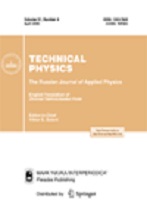|
This article is cited in 1 scientific paper (total in 1 paper)
Physical approaches and problems of data interpretation in the life sciences
The electron-conformational model of ryanodine receptors of the heart cell
A. S. Moskvin
Ural Federal University named after the First President of Russia B. N. Yeltsin, Ekaterinburg
Abstract:
The main ideas of an electron-conformational (EC) model of ligand-activated ryanodine channels (RyR) that reduces many degrees of freedom of this gigantic nanoscopic molecular complex to two so-called electron and conformational degrees of freedom are presented. In the toy model, the conformational potential or energy profile of the RyR channel represents two branches that describe the dependence of energy on the conformational coordinate (reaction coordinate) in the initial and ligand-activated states, respectively. A model extension that takes into account both the tetrameric structure of the RyR channel and additional (orthogonal) rotational conformational mode has been considered. The EC model has been demonstrated to give a biophysical basis to the traditional phenomenological model of Markov chains. To demonstrate the possibilities of the EC model, we refer to examples of model description of the dynamics of isolated RyR channels and clusters of RyR channels in release units of the heart cell.
Keywords:
Conformational Potential, RyR Channels, Reaction Coordinate, Markov Kinetic Models, Slow Conformational Dynamics.
Received: 15.01.2018
Citation:
A. S. Moskvin, “The electron-conformational model of ryanodine receptors of the heart cell”, Zhurnal Tekhnicheskoi Fiziki, 88:9 (2018), 1320–1330; Tech. Phys., 63:9 (2018), 1277–1287
Linking options:
https://www.mathnet.ru/eng/jtf5812 https://www.mathnet.ru/eng/jtf/v88/i9/p1320
|


| Statistics & downloads: |
| Abstract page: | 68 | | Full-text PDF : | 25 |
|





 Contact us:
Contact us: Terms of Use
Terms of Use
 Registration to the website
Registration to the website Logotypes
Logotypes








 Citation in format
Citation in format 
